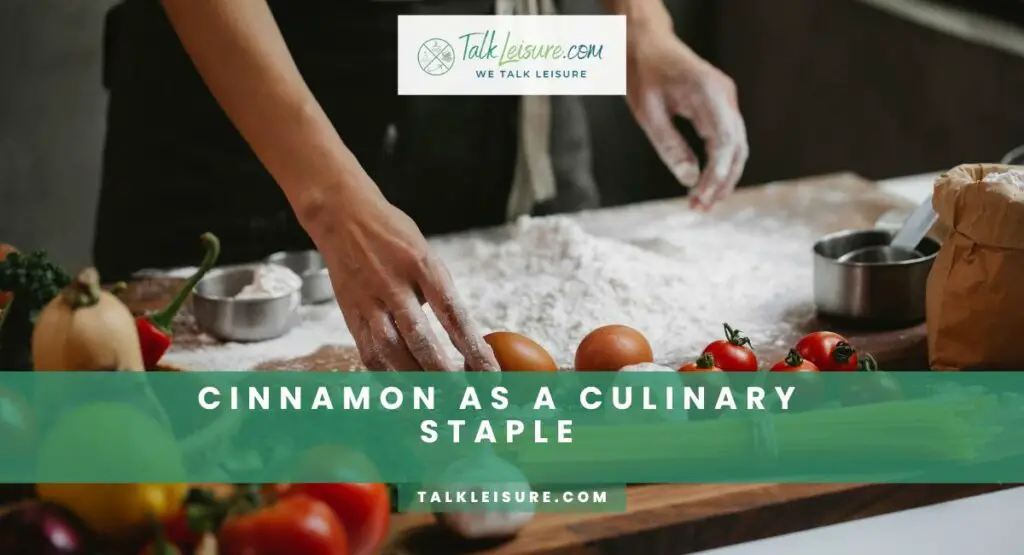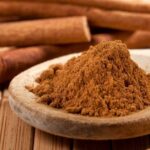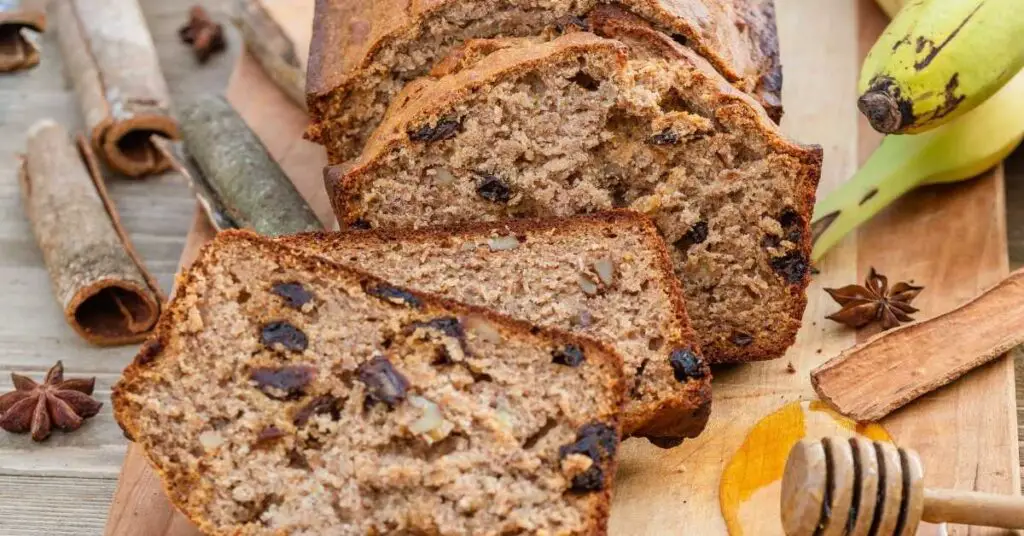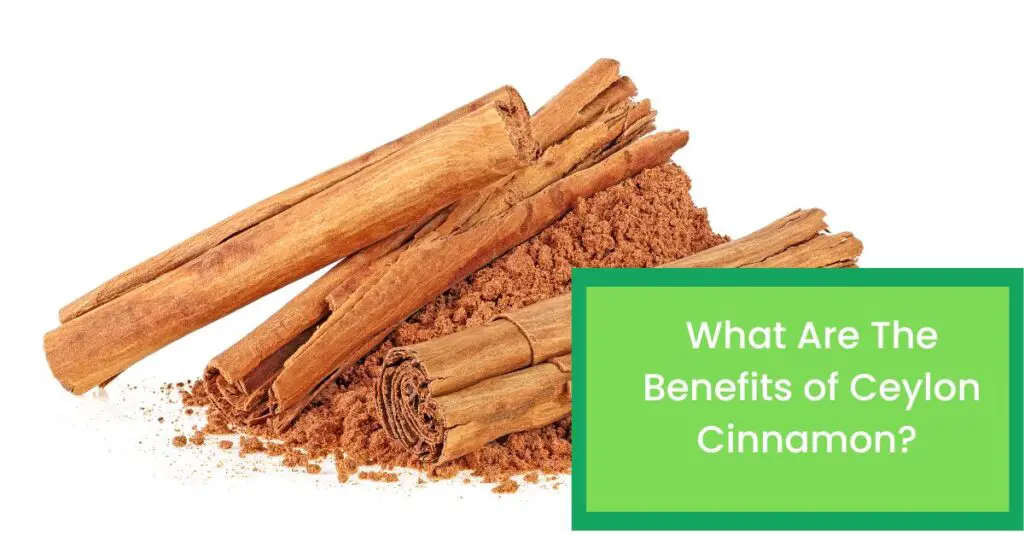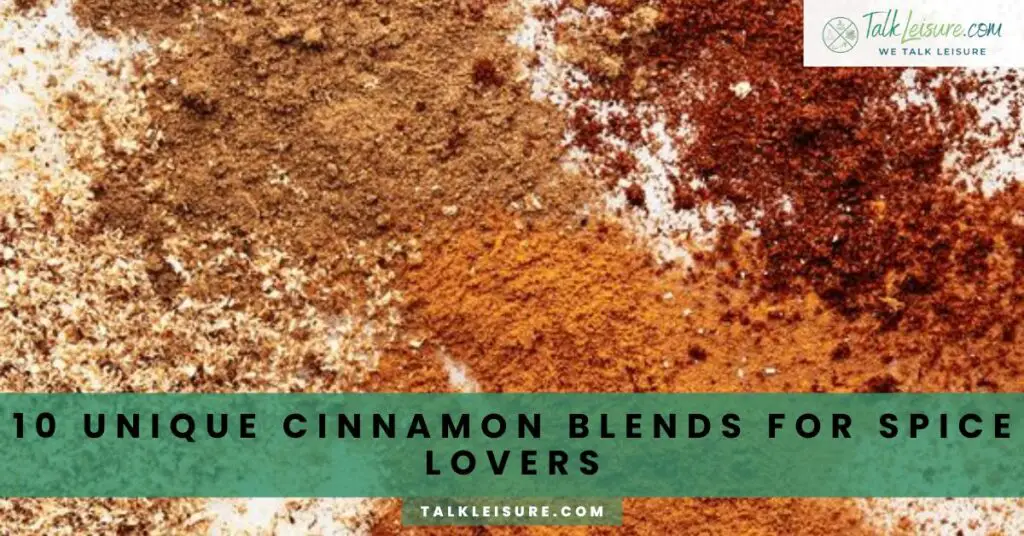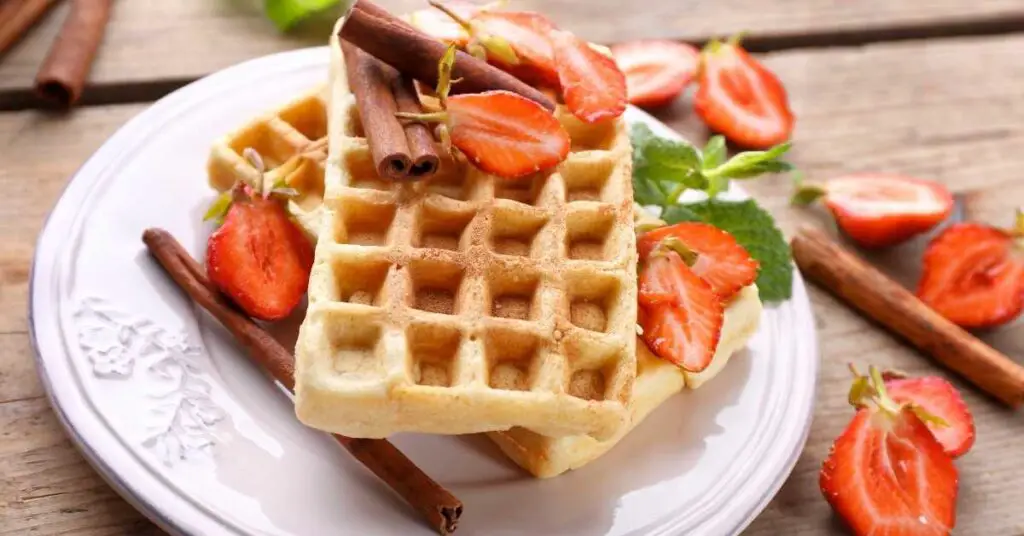Cinnamon is a spice that has been used for thousands of years worldwide. Its unique flavor and aroma make it a staple in many culinary cuisines.
If you’re a food enthusiast looking to take your cooking skills to the next level, cinnamon is a great place to start.
There are many different varieties of cinnamon, each with its distinct flavor and aroma.
Cinnamon is used in savory and sweet dishes around the world. Also, we can add them to drinks too.
Cinnamon sticks and ground cinnamon are the most common types that you’ll find in grocery stores. Depending on the recipe, you may want to use one type.
In this article, we’ll explore the different types of cinnamon, how to use them in cooking, and some essential tips and tricks for getting the most out of this versatile spice.
Whether you’re making sweet or savory dishes, cinnamon has a place in your spice rack.
What is Cinnamon?
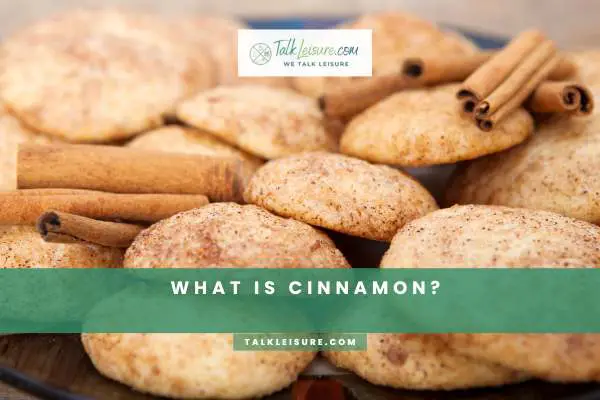
Cinnamon is a spice that is harvested from the inner bark of Cinnamomum trees.
It has a sweet, warm, and slightly spicy flavor commonly used in cooking and baking.
Cinnamon has a long and rich history, dating back to ancient times when it was used for medicinal purposes and as a currency in some cultures.
Cinnamon is available in two primary forms: sticks and ground.
Cinnamon sticks are made from dried and curled cinnamon bark, which are then cut into sticks or quills.
Ground cinnamon is made by grinding cinnamon sticks into a fine powder.
Both forms have their unique flavor and aroma, and they can be used interchangeably in most recipes.
Cinnamon is a versatile spice that can be used in both sweet and savory dishes, from spiced desserts like apple pie to savory dishes like curries and stews.
Adding cinnamon to your dishes can enhance the overall flavor profile, bringing out sweet or savory notes, and adding depth to your dishes.
What Is Culinary Cinnamon?
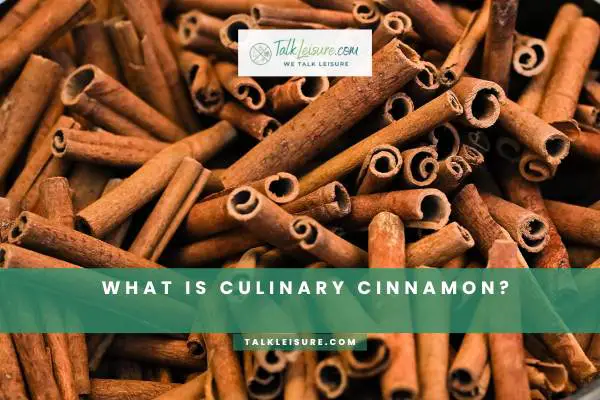
Typically, culinary cinnamon refers to the spice derived from the bark of cassia cinnamon trees.
Although cassia cinnamon and Ceylon cinnamon are often used interchangeably, the latter is considered to be of higher quality and more delicate flavor.
In culinary applications, cinnamon can be used in either stick or powdered form to add a unique flavor profile and aroma to dishes and beverages.
To unleash the full range of cinnamon’s culinary potential, it is recommended to use high-quality Ceylon cinnamon, which is sweeter and more refined than cassia cinnamon and ideal for desserts or baked goods. In contrast, cassia cinnamon is better suited for savory recipes and has a more potent, slightly bitter flavor.
In summary, culinary cinnamon is a must-have ingredient that can elevate any dish or beverage, adding a unique flavor and aroma that sets it apart.
Everything You Ever Wanted To Cook Cinnamon

Cinnamon is a versatile and beloved spice used in various culinary applications worldwide.
Whether you’re a sweet or savory lover, cinnamon can enhance the taste and aroma of your dishes.
There are two primary types of cinnamon: Ceylon and cassia; Ceylon is higher quality and ideal for sweet dishes, while cassia cinnamon is better suited for savory recipes.
Cinnamon can be used in stick or powder form, and its unique flavor profile and scent make it a perfect addition to beverages, desserts, baked goods, and even savory dishes like curries, stews, and meat rubs.
With cinnamon, you can experiment with different recipes and spice up your cooking game quickly.
Whether you want to whip up a quick cinnamon toast or delve into a complex cinnamon lamb stew, there’s always something for everyone.
In conclusion, cinnamon is an essential culinary staple every foodie should have in their pantry.
So, don’t hold back your creativity and start exploring the world of cinnamon today!
What Are The Types Of Cinnamon?
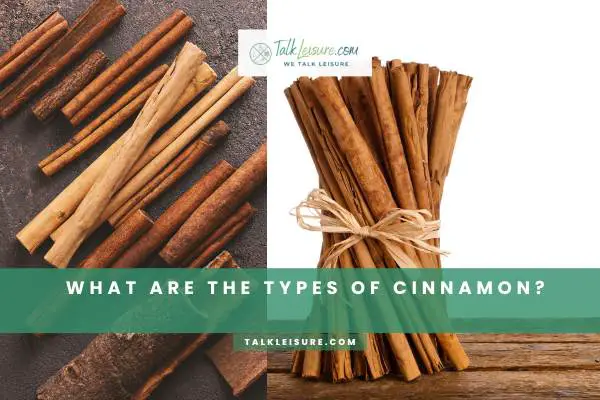
While cinnamon is a staple spice in many kitchens worldwide, not many people know that there are two primary types of cinnamon: Ceylon and cassia.
Also, there are a few other types of cinnamon Saigon Cinnamon and Royal Cinnamon.
While they may look similar, it is essential to understand the differences between the two types of cinnamon to ensure that you use the appropriate one in your recipe.
Whichever type of cinnamon you choose, adding this versatile spice to your dishes will enhance the flavor and aroma and take your cooking game to the next level.
Cassia Cinnamon
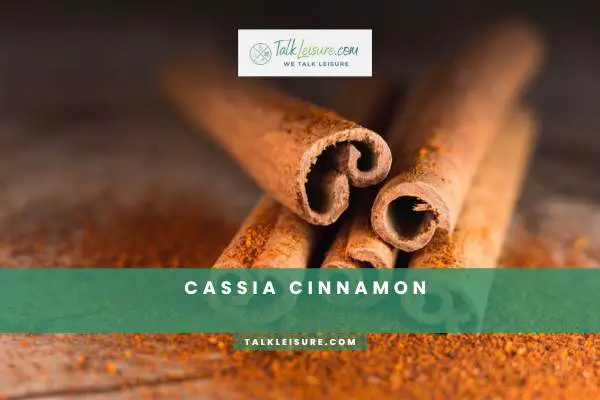
Cassia cinnamon, also known as Chinese cinnamon, is one of the most commonly used spices in the world.
It is harvested primarily in Indonesia, China, and Vietnam and has a more pungent and intense flavor compared to Ceylon cinnamon. Its bark is thicker and darker, and it is typically less expensive than Ceylon cinnamon.
In culinary applications, cassia cinnamon is often used in dishes with strong, robust flavors, such as curries, stews, and meat rubs.
It also pairs well with citrus fruits and is a staple in many Christmas treats, such as cinnamon rolls and gingerbread.
While cassia cinnamon shares similarities to Ceylon cinnamon, it is essential to understand the differences between these two spice varieties.
Using the wrong one could result in a different flavor profile and affect the overall taste of your dish.
So, be sure to check your recipes and use the appropriate cinnamon type to achieve the desired outcome.
Ceylone Cinnamon

Ceylon cinnamon, known for its sweet and mild flavor, is a popular spice with a myriad of uses.
This aromatic bark, derived from the Cinnamomum verum tree, adds a delightful touch to both sweet and savory dishes.
Its warm and slightly citrusy taste distinguishes it from its cousin, cassia cinnamon.
Beyond enhancing the flavor of desserts, Ceylon cinnamon is versatile in beverages like hot cocoa and spiced teas.
Its fragrant essence also makes it a favorite in baking, from cinnamon rolls to cookies.
Not just a culinary delight, Ceylon cinnamon is praised for potential health benefits, including anti-inflammatory properties.
Spice up your recipes and savor the goodness of Ceylon cinnamon.
Saigon Cinnamon
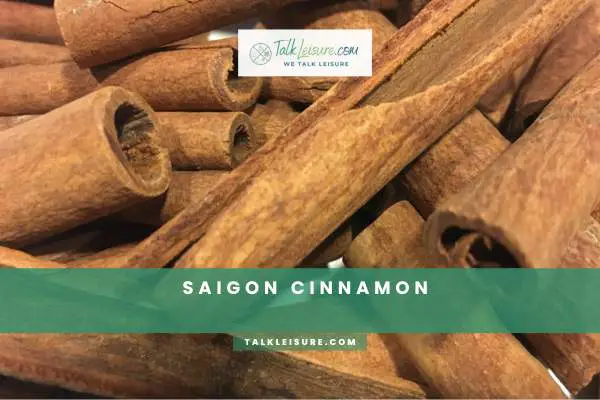
Saigon Cinnamon, also known as Vietnamese cinnamon, is a spice that adds a delightful warmth to dishes.
Its sweet and spicy flavor makes it popular in sweet and savory recipes.
Saigon Cinnamon is harvested from the bark of Cinnamomum loureiroi trees in Vietnam, giving it a distinct and robust taste.
Its aroma is intense, and the flavor is more prosperous than other cinnamon varieties.
It’s commonly used in baking, desserts, and beverages, enhancing the taste of apple pies, cinnamon rolls, and hot drinks. Saigon Cinnamon also boasts potential health benefits, which may help regulate blood sugar levels.
Upgrade your culinary experience by incorporating Saigon Cinnamon into your kitchen for exotic warmth and flavor.
Royal Cinnamon

This heirloom variety, seldom cultivated or traded on a large scale, epitomizes the distinctive combination of intense sweetness and spiciness that makes this Vietnamese cinnamon highly valued.
In central Vietnam, there’s this special kind of cinnamon that’s grown. It’s like a flavor explosion – super sweet and super spicy, like cinnamon but cranked up to the max!
The place where Burlap & Barrel gets it was once the go-to cinnamon source for the royal court, which is why they call it Royal cinnamon.
Royal Cinnamon comes from the mountains of Quang Nam in central Vietnam and is known for its spicy and sweet cinnamon.
Despite being overlooked due to a shift in the commodity market, we were delighted to find that the cinnamon here is still being harvested and is incredibly intense in flavor.
The unique harvesting technique involves making a deep cut around the tree’s base, allowing the bark to dry on the tree for a few weeks, intensifying its spicy and sweet qualities.
In terms of health benefits, while it don’t make specific claims, there’s historical and limited recent evidence suggesting that cinnamon may have antibacterial and antifungal properties, potential anticancer effects, cognitive benefits, and positive impacts on glycemic control and dyslipidemia.
However, it’s important to note that further clinical studies are ongoing, and individuals should consult their healthcare provider for personalized advice.
How Do You Use The Different Types Of Cinnamon?

Cinnamon is a beloved and versatile spice used in sweet and savory dishes worldwide.
There are two main types of cinnamon: Cassia and Ceylon.
Cassia cinnamon has a more pungent and intense flavor and is commonly used in savory dishes like stews and meat rubs.
On the other hand, Ceylon cinnamon is more delicate in flavor and often used in sweet dishes like baked goods, oatmeal, and hot chocolate.
When using cinnamon in recipes, it is crucial to know which type to use to achieve the desired flavor profile.
Cinnamon sticks are perfect for simmering in stews, making tea, or infusing with rice to add a subtle spicy flavor.
Ground cinnamon is ideal for baking sweet treats like cinnamon rolls or adding to spice rubs for meats.
In summary, understanding the different types of cinnamon and their uses is crucial for unleashing its full potential to add flavor and depth to your dishes.
How To Use Cinnamon In Cooking?

Cinnamon is a versatile spice that can add warmth and complexity to various dishes. There are several methods to consider when using cinnamon in cooking.
Choose from cinnamon sticks, ground cinnamon, or oil, depending on your preferences and the recipe you are preparing.
Cinnamon adds warmth and sweetness to dishes, enhancing sweet and savory flavors.
In cooking, use ground cinnamon or cinnamon sticks.
For desserts like apple pie or oatmeal, sprinkle 1/2 to 1 teaspoon of ground cinnamon.
Try a pinch in stews or curries in savory dishes for a subtle depth of flavor. Add cinnamon sticks to simmering liquids like soups or rice pudding, removing them before serving.
In beverages, stir a stick into hot cocoa or tea for a comforting touch.
For a quick snack, toast nuts with a sprinkle of cinnamon in a dry pan.
Remember, a little goes a long way, so start with a small amount and adjust to your taste.
Cinnamon is versatile, so experiment in the kitchen to discover your favorite combinations!
You can use cinnamon sticks to add a subtle spicy note to savory dishes like soups and stews or to create a warm and comforting aroma when simmered with hot apple cider or tea.
Ground cinnamon can elevate sweet recipes like muffins, pancakes, and oatmeal, adding depth to savory dishes like curries or spiced meat rubs.
Cinnamon oil can add a powerful burst of cinnamon flavor to baked goods or as a finishing touch to marinades and dressings.
Remember, a little goes a long way, so start with small amounts and adjust as necessary to achieve the desired flavor profile.
| Type of Dish | Cinnamon Form | Usage Amount | Method | Examples |
|---|---|---|---|---|
| Desserts | Ground Cinnamon | 1/2 to 1 tsp | Sprinkle | Apple Pie, Oatmeal, Muffins, Pancakes, Rice Pudding |
| Savory Dishes | Ground Cinnamon or Cinnamon Sticks | Pinch or 1-2 sticks | Stir in or Simmer | Stews, Curries, Soups, Spiced Meat Rubs, Roasted Vegetables |
| Beverages | Cinnamon Sticks or Ground Cinnamon | 1 stick or 1/2 tsp | Stir in | Hot Cocoa, Tea, Apple Cider, Coffee |
| Quick Snack | Ground Cinnamon | Sprinkle | Toast in a dry pan | Toasted Nuts, Popcorn |
| Baked Goods | Ground Cinnamon or Cinnamon Oil | Varies based on recipe | Mix in batter or use as a finishing touch | Cakes, Cookies, Breads, Pastries, Granola Bars |
| Breakfast | Ground Cinnamon | 1/2 to 1 tsp | Sprinkle on | Yogurt, Smoothies, Granola, French Toast |
| Fruits | Ground Cinnamon | Pinch or Sprinkle | Mix in or Sprinkle | Baked Apples, Grilled Peaches, Fruit Salad |
| Dips & Sauces | Ground Cinnamon or Cinnamon Sticks | Pinch or 1-2 sticks | Stir in or Simmer | Yogurt Dip, BBQ Sauce, Cranberry Sauce |
| Ice Cream | Ground Cinnamon or Cinnamon Sugar | Sprinkle | Mix in or Dust on top | Cinnamon Swirl Ice Cream, Churro Sundae |
| Rice Dishes | Cinnamon Sticks | 1-2 sticks | Simmer with rice | Cinnamon Rice, Pilaf |
| Cocktails | Cinnamon Sticks or Ground Cinnamon | 1 stick or a pinch | Stir or Garnish | Mulled Wine, Cinnamon Whiskey Sour |
| Vegetarian Dishes | Ground Cinnamon | Pinch | Stir in | Lentil Curry, Chickpea Stew |
How To Cook With Cinnamon Sticks?

Cinnamon sticks are a popular and versatile spice in various dishes and beverages.
To use cinnamon sticks, you can either grind them into a powder or steep them in hot liquids like milk or tea.
Add cinnamon sticks to flavor soups and stews during the cooking process to allow the cinnamon to infuse with the dish’s flavors.
Cinnamon sticks are also excellent for creating aromatic and flavorful beverages like warm apple cider or spiced tea.
For a traditional chai tea, brew black tea with whole spices such as cinnamon, ginger, cloves, and cardamom.
Toasting cinnamon sticks beforehand releases their oils and enhances their flavor, making them a perfect addition to any baked goods.
Remember that cinnamon sticks are potent, so it’s best to start with a small amount and adjust according to taste.
With these tips, you can add a delightful warm note to your cooking and beverages using cinnamon sticks.
Cinnamon Sensation And Sweetening Your Seasoning

Cinnamon is not only a delicious and versatile spice, but it’s also a staple ingredient in many cuisines around the world.
Whether you’re making sweet treats, savory dishes, or hot beverages, cinnamon can add a unique and aromatic flavor profile to your recipes.
One of the best ways to use cinnamon in cooking and baking is by using ground cinnamon powder.
This way, it can be easily incorporated into your dishes for an extra burst of flavor.
However, cinnamon sticks can also be used to infuse a subtle cinnamon flavor into your recipes when added during the cooking process.
The possibilities of cinnamon are endless, from spiced pumpkin pie to cinnamon sugar cookies, and sweet potato casserole.
In addition to its delicious flavor, cinnamon also offers potential health benefits such as anti-inflammatory and antioxidant properties.
So, next time you’re in the kitchen, add a little cinnamon to spice up your dish and elevate the flavor.
What Are The Top Five Dishes With Cinnamon?

Cinnamon is a widely used spice that is loved by chefs and food enthusiasts all over the world.
It is versatile and can be used in both sweet and savory dishes. Here are the top five dishes that fully highlight the versatility of cinnamon:
Cinnamon Rolls – A classic sweet treat that is perfect for brunch or as a midday snack.
Apple Pie – The warm and comforting flavors of cinnamon perfectly complement the sweet tartness of apples in a classic apple pie recipe.
Moroccan Tagine – A flavorful, slow-cooked stew featuring cinnamon, cumin, and other spices traditionally served with couscous.
Homemade Chai Latte – Cinnamon adds warmth and depth to this comforting, spiced tea.
Butternut Squash Soup – This simple, creamy soup boosts flavor from cinnamon and makes for a perfect comfort food during the fall and winter months.
Cinnamon Rolls Recipe

Ingredients:
For the Dough:
- 2 1/4 teaspoons (1 packet) active dry yeast
- 1 cup warm milk (about 110°F or 43°C)
- 1/4 cup granulated sugar
- 1/3 cup unsalted butter, melted
- 1 teaspoon salt
- 2 large eggs
- 4 cups all-purpose flour
For the Filling:
- 1/2 cup unsalted butter, softened
- 1 cup brown sugar, packed
- 2 tablespoons ground cinnamon
For the Cream Cheese Frosting:
- 4 ounces cream cheese, softened
- 1/4 cup unsalted butter, softened
- 1 cup powdered sugar
- 1/2 teaspoon vanilla extract
Instructions:
1. Activate the Yeast:
- In a bowl, combine the warm milk and sugar. Stir until the sugar dissolves.
- Sprinkle the yeast over the milk mixture and let it sit for 5-10 minutes until foamy.
2. Make the Dough:
- Combine the melted butter, salt, and eggs in a large mixing bowl.
- Add the activated yeast mixture and mix well.
- Gradually add the flour, one cup at a time, stirring until a soft dough forms.
- Knead the dough on a floured surface for about 5 minutes until smooth and elastic.
3. First Rise:
- Place the dough in a greased bowl, cover it with a clean kitchen towel, and let it rise in a warm place for 1-2 hours or until doubled in size.
4. Prepare the Filling:
- Mix the softened butter, brown sugar, and cinnamon in a small bowl until well combined.
5. Roll out the Dough:
- Punch down the risen dough and roll it out on a floured surface into a large rectangle.
6. Add the Filling:
- Spread the cinnamon-sugar mixture evenly over the rolled-out dough.
7. Roll the Dough:
- Starting from one of the longer sides, tightly roll the dough into a log.
8. Cut into Rolls:
- Using a sharp knife or dental floss, cut the log into 12 equal slices.
9. Second Rise:
- Place the cinnamon rolls in a greased baking pan, leaving a little space between each roll.
- Cover the pan with a towel and let the rolls rise for 30-45 minutes.
10. Bake: – Preheat the oven to 350°F (175°C). – Bake the cinnamon rolls for 20-25 minutes or until golden brown.
11. Make the Frosting: – While the rolls are baking, prepare the cream cheese frosting. – In a bowl, beat the softened cream cheese, butter, powdered sugar, and vanilla extract until smooth.
12. Frost the Rolls: – Once the cinnamon rolls are out of the oven, let them cool for a few minutes. – Spread the cream cheese frosting over the warm rolls.
13. Serve and Enjoy: – Serve the cinnamon rolls warm and enjoy the gooey deliciousness!
These homemade cinnamon rolls are perfect for breakfast or a sweet treat any time of the day!
Apple Pie Recipe
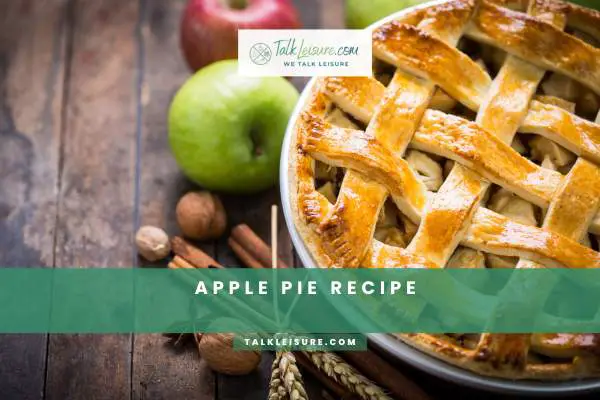
Ingredients:
Pie Crust:
- 2 1/2 cups all-purpose flour
- 1 cup unsalted butter, cold and cubed
- 1/2 teaspoon salt
- 1/4 cup granulated sugar
- 1/4 to 1/2 cup ice water
Filling:
- 6-7 cups peeled and sliced apples (mix of tart and sweet varieties)
- 3/4 cup granulated sugar
- 1/4 cup brown sugar
- 1 tablespoon lemon juice
- 2 tablespoons all-purpose flour
- 1 teaspoon ground cinnamon
- 1/4 teaspoon ground nutmeg
- 1/4 teaspoon salt
Topping:
- 1 tablespoon milk
- 1 tablespoon granulated sugar
Instructions:
1. Prepare the Pie Crust:
In a large bowl, combine the flour, sugar, and salt.
Add the cold, cubed butter to the flour mixture.
Use a pastry cutter or your hands to work the butter into the flour until the mixture resembles coarse crumbs.
Gradually add ice water, one tablespoon, and mix until the dough comes together.
Divide the dough in half, shape each half into a disk, wrap in plastic wrap, and refrigerate for at least 1 hour.
2. Preheat the Oven:
- Preheat your oven to 425°F (220°C).
3. Prepare the Filling:
In a large bowl, toss the sliced apples with lemon juice.
Combine the granulated sugar, brown sugar, flour, cinnamon, nutmeg, and salt in a separate bowl.
Add the sugar mixture to the apples and toss until the apples are evenly coated.
4. Roll Out the Pie Crust:
Roll out one of the chilled pie crust disks on a floured surface to fit a 9-inch pie dish.
Carefully place the rolled-out crust into the pie dish.
5. Fill the Pie:
Pour the prepared apple filling into the pie crust, spreading it out evenly.
6. Add the Top Crust:
Roll out the second chilled pie crust disk and place it over the filling.
Trim and crimp the edges of the crust to seal the pie.
7. Ventilation:
Use a sharp knife to make a few small slits or cut decorative vents in the top crust to allow steam to escape.
8. Brush and Bake:
Brush the top crust with milk and sprinkle sugar over it for a golden finish.
Bake in the oven for 45-55 minutes or until the crust is golden brown and the filling is bubbly.
9. Cool and Serve:
Allow the pie to cool for at least 2 hours before slicing. Serve with a scoop of vanilla ice cream if desired.
Enjoy your delicious homemade apple pie!
Moroccan Tagine Recipe
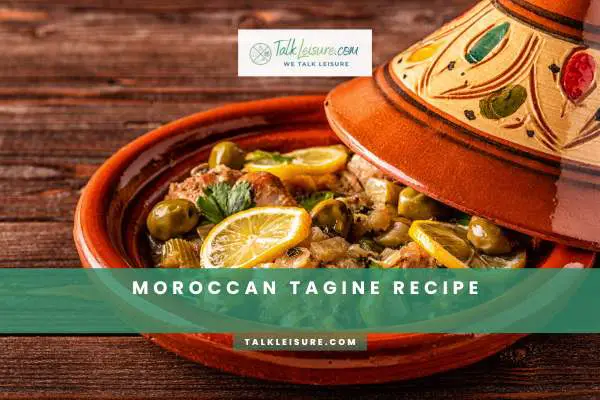
Ingredients:
- Chicken Thighs (4-6 pieces)
- Onions (2, finely chopped)
- Garlic Cloves (4, minced)
- Ginger (1 tablespoon, grated)
- Ground Cumin (1 teaspoon)
- Ground Coriander (1 teaspoon)
- Turmeric Powder (1/2 teaspoon)
- Paprika (1 teaspoon)
- Cinnamon Stick (2):
- Saffron Threads (a pinch)
- Tomatoes (2, chopped)
- Chicken Broth (1 cup)
- Olives (1/2 cup, pitted)
- Preserved Lemon (1, sliced):
- Fresh Cilantro (a handful, chopped)
- Olive Oil (2 tablespoons)
- Salt and Pepper (to taste)
Instructions:
- Prepare the Chicken:
- Season the chicken thighs with salt, pepper, cumin, coriander, turmeric, and paprika. Let it marinate for at least 30 minutes.
- Sauté Onions and Garlic:
- In a tagine or a deep, wide pan, heat olive oil. Add chopped onions and minced garlic. Sauté until softened.
- Brown the Chicken:
- Add the marinated chicken to the pan. Brown on all sides for a flavorful base.
- Add Aromatics:
- Stir in grated ginger, cinnamon stick, and saffron threads. Allow the aromas to infuse.
- Tomatoes and Broth:
- Toss in chopped tomatoes. Once they release their juices, add chicken broth. Simmer for 10 minutes.
- Layer Flavors:
- Place preserved lemon slices and olives on top. Cover and let it simmer on low heat for 30-40 minutes.
- Check for Doneness:
- Ensure the chicken is cooked through. The meat should be tender and easily pull away from the bone.
- Garnish and Serve:
- Sprinkle fresh cilantro over the tagine. Serve the Moroccan chicken tagine over couscous or with crusty bread to soak up the flavorful sauce.
Enjoy this Moroccan tagine, a dish that captures the essence of North African cuisine with its rich blend of spices and aromatic ingredients!
Homemade Chai Latte Recipe
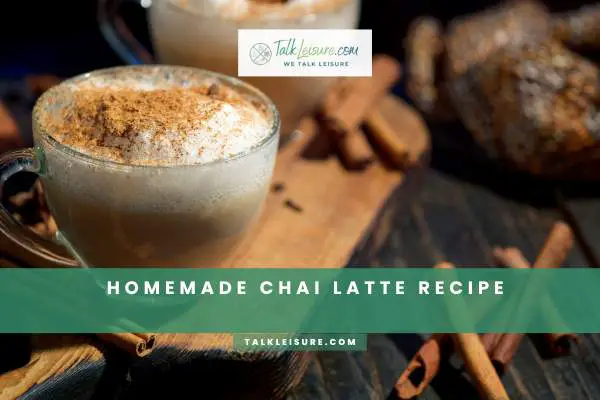
Ingredients:
- 2 cups of water
- 2 cups of milk (whole milk or a dairy-free alternative)
- 4 black tea bags
- 4 tablespoons of sugar (adjust to taste)
- 1 cinnamon stick
- 4-6 whole cloves
- 4-6 cardamom pods, lightly crushed
- 1-2 teaspoons of grated fresh ginger
- 1/4 teaspoon of ground black pepper
- Optional: a pinch of nutmeg
Instructions:
Boil the Water: Bring the 2 cups of water to a boil in a saucepan.
Add Tea Bags: Add the four black tea bags once the water is boiling. Let them steep for about 5 minutes. Adjust the steeping time based on your preference for tea strength.
Add Spices: Add the cinnamon stick, cloves, crushed cardamom pods, grated ginger, black pepper, and optional nutmeg to the saucepan. Stir the mixture gently.
Add Sugar: Stir in the sugar to the tea and spice mixture. Adjust the amount based on your sweetness preference.
Add Milk: Pour in the 2 cups of milk into the saucepan. You can use whole milk or a dairy-free alternative like almond, soy, or oat milk.
Simmer: Reduce the heat to low and let the chai latte simmer for 5-7 minutes. Stir occasionally to ensure the flavors are well combined.
Strain and Serve: After simmering, remove the saucepan from the heat. Using a fine mesh strainer or cheesecloth, strain the chai into your mugs or teacups to remove the tea leaves and spices.
Enjoy: Your homemade chai latte is ready to be enjoyed! Feel free to garnish with a sprinkle of cinnamon on top.
Butternut Squash Soup Recipe

Ingredients:
- Butternut Squash (1 medium-sized)
- Onion (1 medium)
- Carrots (2 medium):
- Celery (2 stalks):
- Garlic (2 cloves):
- Vegetable Broth (4 cups):
- Olive Oil (2 tablespoons):
- Ground Cinnamon (1/2 teaspoon):
- Ground Nutmeg (1/4 teaspoon)
- Salt and Pepper to taste:
- Optional Garnish: Fresh parsley, a dollop of sour cream, or roasted pumpkin seeds.
Instructions:
Prepare the Squash:
- Peel, seed, and dice the butternut squash into small cubes.
Sauté the Aromatics:
- In a large pot, heat olive oil over medium heat. Add chopped onions, carrots, celery, and minced garlic. Sauté until vegetables are softened (about 5-7 minutes).
Add Squash and Spices:
- Add the diced butternut squash to the pot. Sprinkle with ground cinnamon, nutmeg, salt, and pepper. Stir to coat the vegetables with the spices.
Pour in Broth:
- Pour in the vegetable broth, ensuring it covers the vegetables. Bring the mixture to a boil, then reduce heat to simmer. Cover and cook until the squash is tender (about 15-20 minutes).
Blend the Soup:
- Once the squash is tender, use an immersion blender or transfer the soup to a blender (in batches) to puree until smooth. Be cautious with hot liquids.
Adjust Seasoning:
- Taste the soup and adjust the seasoning, adding more salt and pepper if needed.
Serve:
- Ladle the soup into bowls. Garnish with fresh parsley, a dollop of sour cream, or roasted pumpkin seeds if desired.
Enjoy:
- Serve the butternut squash soup hot and enjoy its comforting flavors!
This easy butternut squash soup recipe is perfect for a cozy meal on a chilly day. Feel free to customize it to your liking by adjusting the seasoning or adding a touch of cream for extra richness.
Adding cinnamon to your favorite dishes can elevate the taste and aroma to a new level. Try incorporating it into your next meal and see how it transforms the dish.
Homemade Sweet And Savory Recipes To Try At Home
Cooking can be a fun and creative outlet, especially when you’re looking to try new recipes.
One way to spice up your dishes is by incorporating cinnamon, a versatile spice that complements sweet and savory flavors.
From cinnamon rolls to butternut squash soup, this spice brings warmth, depth, and an aromatic element to any dish.
If you’re looking to experiment with cinnamon in your cooking, here are some homemade sweet and savory recipes to try at home:
- Cinnamon Sugar Coated Pecans
- Cinnamon-Spiced French Toast
- Cinnamon Swirl Bread
- Cinnamon Roasted Chicken
- Moroccan-Spiced Carrots with Cinnamon
With these recipes, you can explore the full potential of cinnamon in your cooking and surprise your taste buds with new flavors and aromas. So go ahead, get creative, and give these recipes a try!
Tips and Tricks to Cook with Cinnamon
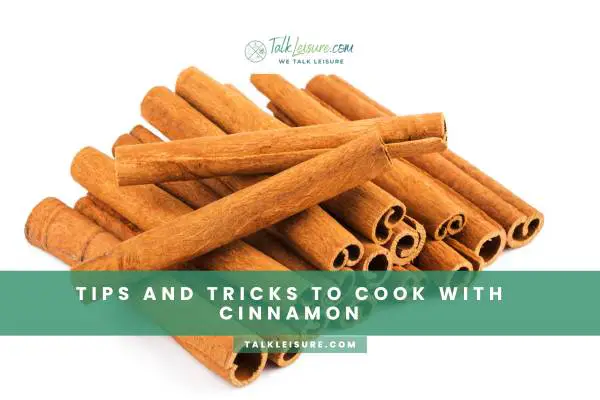
Cinnamon is a versatile spice that can enhance both sweet and savory dishes.
It is important to know when and how to use it to make the most of this popular seasoning. Here are some tips and tricks to cook with cinnamon:
Choose the right type of cinnamon. There are two main types of cinnamon: Ceylon and Cassia. Ceylon is more expensive and has a sweeter, milder flavor, while Cassia is thicker and has a more robust, spicier taste.
Pair cinnamon with complementary flavors. Cinnamon pairs well with flavors like vanilla, nutmeg, and citrus. Experiment with different combinations to find your favorite.
Use cinnamon in moderation. While cinnamon is delicious, it can be overpowering if you use too much. Be sure to follow the recipe or find a balance in amount.
Don’t be afraid to try savory dishes. While cinnamon is typically used in sweet treats like cookies and cakes, it can also add depth to delicious dishes like roasted vegetables and curries.
These tips and tricks can elevate your cooking and make the most of this beloved spice.
What Is The Importance Of Cinnamon In Cooking?
Cinnamon is a versatile spice that has been used in cooking for centuries.
Its unique flavor profile adds warmth and depth to sweet and savory dishes.
Cinnamon is also known for its health benefits, such as regulating blood sugar levels and reducing inflammation.
In cooking, cinnamon is often used in dessert dishes like apple pie and cinnamon rolls.
But it can also add a distinctive flavor to savory dishes like Moroccan tagines, Indian curries, and Mexican mole sauces.
Cinnamon can be used as a standalone flavor or paired with other spices like nutmeg, ginger, and cloves for a complex flavor profile.
Using cinnamon in moderation is vital. Too much can overpower a dish, while too little can leave it lacking flavor.
Experimenting with different amounts and combinations is essential to find the right balance for your dish.
With its unique taste and versatility, cinnamon is truly a culinary staple.
Is Cinnamon A Staple Food?
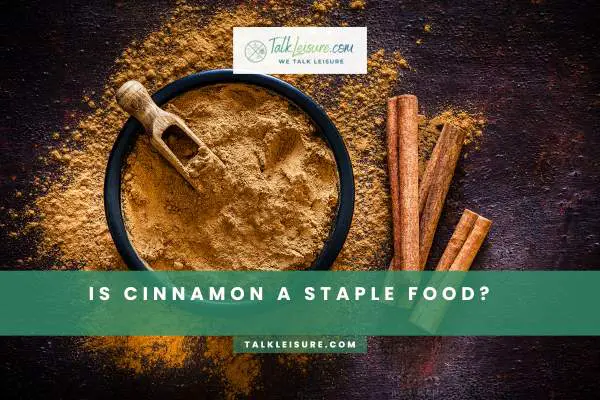
Cinnamon is an essential spice in every kitchen and a culinary staple worldwide.
It has been used for centuries to add flavor and warmth to many dishes, from sweet to savory.
Cinnamon can take your recipes to a whole new level, be it a classic dessert or an exciting fresh savory meal as a staple food.
Its unique aroma and flavor profile can enhance the quality of your dishes.
Not only is cinnamon used for its culinary applications but it’s also known for its incredible health benefits, such as reducing inflammation and regulating blood sugar levels.
Cinnamon has become an indispensable ingredient in many cultures and cuisines globally.
With its versatility and flavor profile, it’s no wonder cinnamon has become such a popular spice worldwide.
So, it’s safe to say that cinnamon is, without a doubt, a culinary staple that every kitchen should have.
Final Thoughts
In conclusion, cinnamon is a culinary gem, transforming ordinary dishes into extraordinary delights.
Its warm and sweet notes elevate sweet and savory creations, leaving an indelible mark on our taste buds.
As a versatile spice, it effortlessly bridges cultures and cuisines, adding a touch of comfort and nostalgia to every meal.
Whether sprinkled on oatmeal, stirred into curries, or baked into desserts, cinnamon’s aromatic presence is a testament to its culinary prowess.
Embrace this humble spice in your kitchen, and embark on a flavorful journey that transcends borders, creating memorable dining experiences that linger in the heart and on the palate.
FAQ
What Are The Three Important Points Of Cinnamon?
Cinnamon is a popular spice that has been used for centuries for both culinary and medicinal purposes. It adds a warm and sweet flavor to many dishes, and studies have shown that it may have health benefits such as reducing inflammation and blood sugar levels.
There are three important points to keep in mind when using cinnamon:
- The type of cinnamon: Cassia and Ceylon are two main types of cinnamon. Cassia is the more common type found in grocery stores and has a more robust flavor. Ceylon is considered the “true” cinnamon and has a milder, sweeter taste.
- The amount to use: Cinnamon is potent, and a little goes a long way. It is best to start with a small amount and adjust to taste.
- When to add it: Cinnamon should be added early in the cooking process to allow the flavors to meld together. It can also be added as a finishing touch on oatmeal or baked goods.
What Country Use The Cinnamon Most?
According to FoodDive, Indonesia holds the top position as the world’s largest consumer of cinnamon, with the majority of its substantial domestic harvest intended for distribution within the country. Therefore, purchasing cinnamon in the United States likely originates from another nation, particularly Sri Lanka.
Other Than Baking, What Can Cinnamon Be Used For?
Beyond its baking role, cinnamon serves various delightful purposes. Enhance your morning routine by sprinkling it on oatmeal, cereal, or yogurt.
Transform your drinks with cinnamon in coffee, tea, or hot chocolate.
Elevate the flavor of fruits like apples and bananas, or add it to smoothies for a warm kick.
Create spiced nuts or a stovetop potpourri for a cozy aroma at home—combat ants by placing cinnamon near entry points and concoct a natural air freshener with cinnamon and water.
Mix it with honey and sugar for a DIY beauty scrub, leaving your skin feeling soft and smooth.
Best Wishes!

